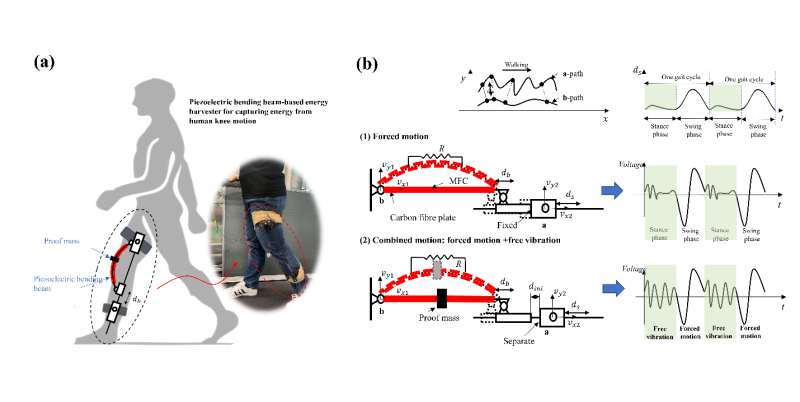Exploiting Energy Harvesting Technologies to Capture Energy from Human Motion
Date:20-10-2023 | 【Print】 【close】
Researchers led by Prof. GAO Fei and Prof. WU Xinyu from the Shenzhen Institute of Advanced Technology (SIAT) of the Chinese Academy of Sciences have exploited energy harvesting technologies to develop a lightweight piezoelectric energy harvester to scavenge energy from human knee motion.
The study was published in IEEE/ASME Transactions on Mechatronics Oct. 13.
With the rapid development of microelectronics and wireless communication technologies, various miniature wearable and portable electronics occur in our daily lives, for instance, smartphones, smart watches, wireless headphones, healthy wireless monitors, GPS, etc. However, as most are electrochemical battery-powered devices, battery replacement, and daily charging significantly block the application explosion and decrease user experience.
To address the energy issue confronting body-worn electronics, researchers proposed exploiting energy harvesting technologies to capture energy from the human body such that body-worn devices can be battery-free, thus eliminating battery capacity limitations. However, after decades of development, the harvesters’ output power still cannot cover the electronics’ energy consumption due to the low energy harvesting efficiency, which results in stagnation in this field.
Energy sources in human bodies are available in different forms, including solar, heat, radiofrequency, and kinetic energy. This work focuses on capturing kinetic energy from the human daily motion and converting it into electricity.
In this study, researchers developed a lightweight piezoelectric bending beam-based human knee energy harvester to generate electricity from the human knee motion during daily walking.
In the swing phase, the piezoelectric bending beam underwent a forced motion due to the large flexion of the human knee. While in the stance phase, the piezoelectric bending beam was released to experience a free vibration. A proof mass was mounted on the bending beam to tune the free vibration for improving energy harvesting efficiency.
When the user walked at 7 km/h on a treadmill, the harvester’s average power output can reach 43.4 mW.
"The output power is improved by 10 to 100 times compared with the existing works," said Prof. GAO Fei, first author of the study. "In addition, the harvester will not increase users’ effort for walking due to the lightweight and low interaction force, which will attract substantial attention from the potential users."

(a) Schematic diagram of the energy harvester developed for the human knee. (b) Working principles of the energy harvester. (Image by SIAT)
Media Contact:
ZHANG Xiaomin
Email:xm.zhang@siat.ac.cn